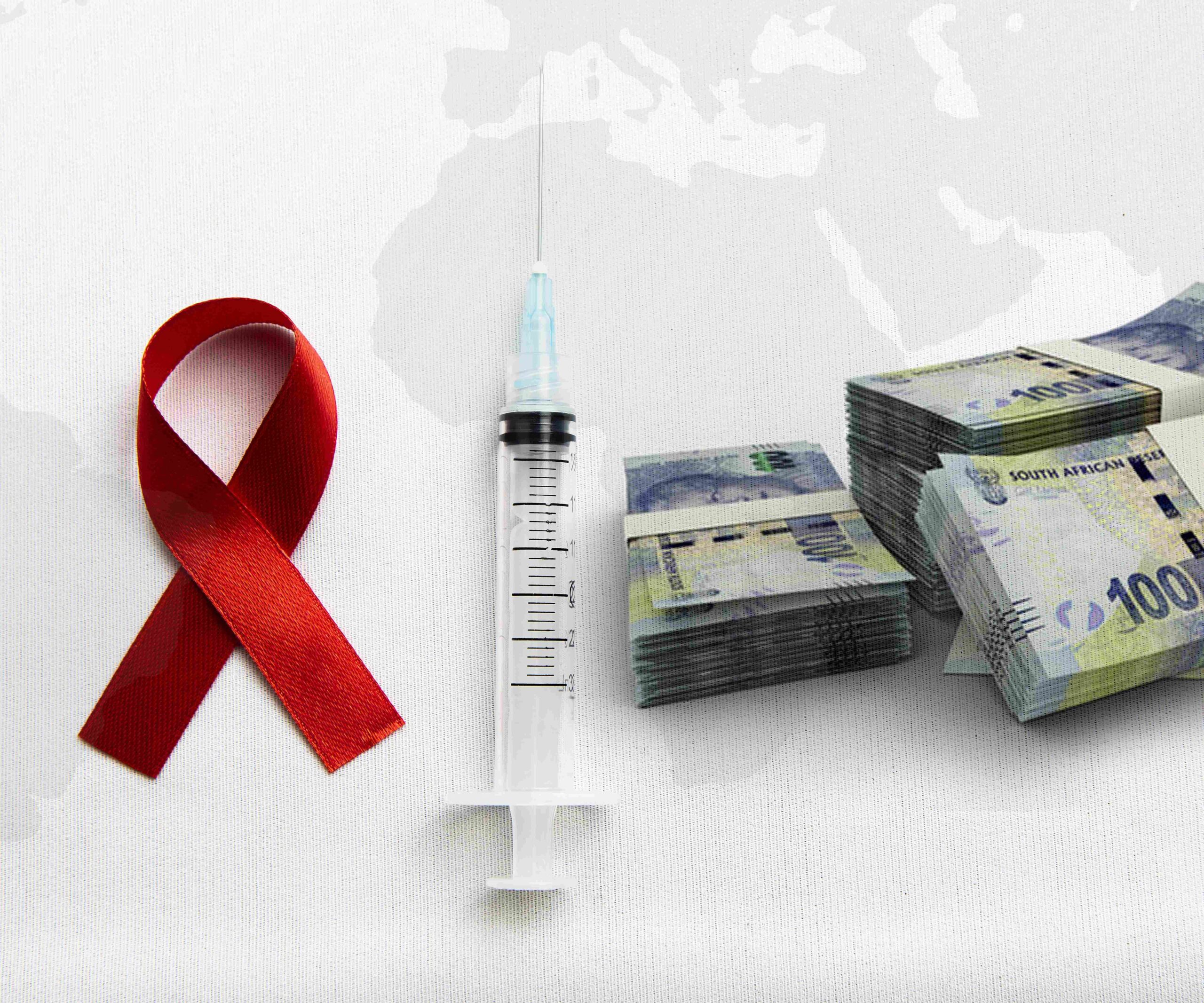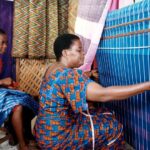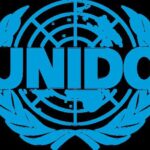By Conrad Onyango
African countries have begun ramping up domestic financing of HIV/AIDS prevention and treatment to mitigate the impact of donor funding cuts, including from the United States, the world’s largest single donor to the cause.
While the shrinking donor funds have been widely projected as a crisis for countries and public health institutions heavily dependent on international donors, some African nations have taken it as an opportunity to rethink local solutions towards long term sustainability.
South Africa, Uganda, Botswana, Tanzania, and Togo have been listed among at least 25 countries across the world that are committing to increase domestic budgets for HIV prevention and care, according to the Global AIDS Update 2025 released in July by UNAIDS.
“In 2025, the HIV financing architecture has undergone unprecedented changes. Most notably, the freeze and uncertainty surrounding PEPFAR’s funding commitments,” according to the UNAIDS report.
In 2024, the U.S. contributed US$6.7 billion to the global HIV response. But early 2025, under the Trump administration, the President’s Emergency Plan for AIDS Relief (PEPFAR) , widely credited with saving millions of lives through global HIV prevention, testing, and treatment efforts, suffered massive retrenchment.
Roughly 60% of its US $4.8 billion allocation was withheld, but in Mid July, the U.S. Senate objected to major funding cuts, with efforts to claw back an additional US $400 million already appropriated to the program.
UNAIDS statistics shows at the end of 2024, US$ 18.7 billion was available for the AIDS response in low- and middle-income countries, just 17% below the US$ 21.9 billion needed annually by 2030 to stay on track to end AIDS as a public health threat.
Around 52% was from domestic sources, with local funding increased by 2.2% in 2024, the report noting it is the first rise since the onset of the COVID-19 pandemic.
“This is promising, but not sufficient to replace the scale of international funding in countries that are heavily reliant,” the report warns.
The cut in donor funding to Africa will sustain in coming years, including areas away from healthcare sector.
A 2025 UNCTAD report projects that development assistance to Africa will plummet to just US $24 billion by year end, down from US $80 billion in 2021, a staggering 70% drop and the sharpest decline in decades.
Despite these developments in international donations, domestic funds mobilisation for HIV/AIDs war is gaining traction on the continent.
African countries headlining local resources mobilisation are either revising upward their HIV-related health budgets or drawing up sustainability roadmaps to mitigate the effects of the donor pullback.
South Africa, the country with the world’s highest number of HIV infections, currently funds 77% of its AIDS response and has announced a 5.9% annual increase in health expenditure over the next three years, including a 3.3% annual rise specifically for HIV and tuberculosis programs.
South African government said the funds will be used to support a centralized patient information system, chronic medicine distribution, and medicine stock surveillance.
Uganda is implementing a “sustainability roadmap” backed by government commitments of US $8.8 million for the second quarter of 2025 and US $165.4 million for fiscal year 2025–2026.
A separate two-year transition plan is being developed by the East African economy to facilitate further increases in domestic HIV financing in its 2026–2027 national budget.
Botswana has also set domestic funding targets for its HIV response through 2026 and 2030, as part of a broader goal to increase healthcare funding to 15% of the national budget by the end of the decade.
Tanzania has committed to raising more than half of its multisectoral HIV response funding from domestic sources, including the private sector, while Togo’s roadmap aims to boost domestic HIV financing from 15% to 50% by 2030.
At the 13th International AIDS Society Conference (IAS 2025) in Kigali, Rwanda, World Health Organization (WHO) Director-General Dr. Tedros Adhanom Ghebreyesus confirmed this transition, citing it as a pivotal moment for Africa.
“Many health ministers and leaders have told me that they see this crisis as an opportunity to leave behind the dependency and move toward sustainable self-reliance by mobilizing domestic resources,” he told the events participants.
During the event, WHO launched a new long-acting injectable antiretroviral, lenacapavir (LEN), designed to replace costlier daily oral treatments, encouraging governments to adopt rapid HIV testing kits to reduce the burden of “complex, costly procedures.”
According to WHO, 1.3 million people contracted HIV in 2024 across the world, with the highest burden borne by sex workers, men who have sex with men, transgender people, people who inject drugs, incarcerated individuals, and the adolescents.
With 490,000, Africa had the highest share of new infections, and also had the highest share of women and girls at 63% against world’s average of 45%.
More African countries have been called to join up the new shift in domestic resource mobilisation drive.
“We cannot let that progress slip away. Governments, scientists, civil society, and affected communities must stand together to uphold those gains and shape a new sustainable path rooted in shared responsibility and equity,” said Dr. Tedros.
According to a 2025 Africa CDC report, ‘Africa’s Health Financing in a New Era,’ published in April 2025, most African nations continue to allocate less than 10% of their national budgets to health, with about 30 African countries allocating as little as 5–7% of their national budgets to health, far too short of the 15% target set under the 2001 Abuja Declaration.
Only Rwanda, Botswana, and Cabo Verde have been listed among those that have consistently met or exceeded the goal.
“Despite decades of advocacy, African countries continue to allocate insufficient domestic resources to health, undermining progress toward health equity and system resilience,” the Africa CDC notes in the report.
Africa CDC also called for a new wave of political and financial commitment, including updated national health development and financing plans, and the establishment of innovative funding mechanisms such as health insurance schemes, sin taxes, and solidarity levies.
bird story agency
African countries are increasing domestic financing for HIV/AIDS prevention and treatment to counteract cuts in international donor funding, notably from the U.S., the largest global donor through PEPFAR.
The UNAIDS Global AIDS Update 2025 highlights efforts by countries like South Africa, Uganda, Botswana, Tanzania, and Togo to boost domestic budgets for HIV prevention amidst a 60% reduction in PEPFAR funding.
This shift is seen as a chance for countries to pursue sustainable, self-reliant healthcare solutions.
Despite a projected 70% decline in development assistance to Africa by the end of 2025, countries are boosting local resources, exemplified by South Africa funding 77% of its AIDS response and planning a budget increase for HIV and tuberculosis programs. Uganda is working on a sustainable funding roadmap,
Botswana aims for a 15% health budget allocation, and Tanzania and Togo focus on private sector contributions and increasing domestic financing to 50% by 2030.
At the 13th IAS Conference, WHO emphasized the importance of this transition for Africa's health sector, launching cost-effective treatments like long-acting injectable antiretroviral lenacapavir and urging rapid HIV testing.
Africa continues to bear the highest share of HIV infections, with new infections concentrated among high-risk groups and women, stressing the need for sustained global and local efforts toward health equity.
The Africa CDC calls for increased national health budget allocations, surpassing the current allocation of 5-7% in many African countries, advocating for innovative financing mechanisms and stronger political commitment to health.






